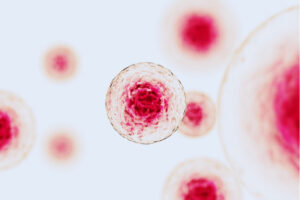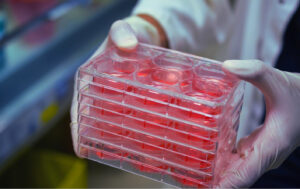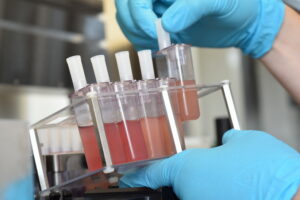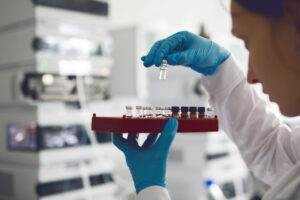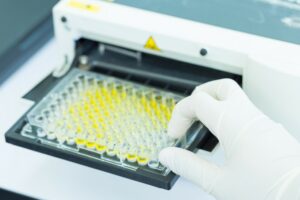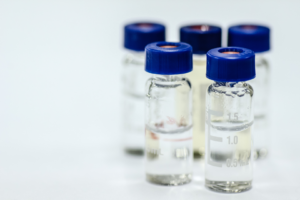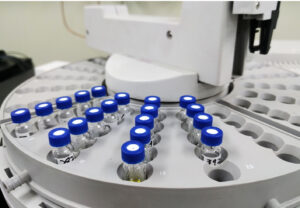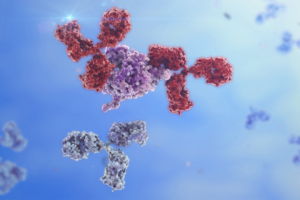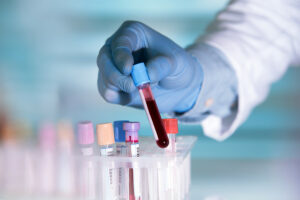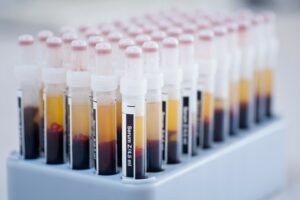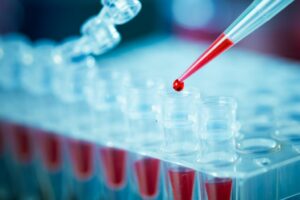
Frequently Asked Questions (FAQ)
In this section you will find frequently asked questions (FAQ) about the following biopharmaceutical services provided by FyoniBio:
Cell Line Development – General
Each project is unique. We can certainly tailor our services to your specific needs. Each individual project is planned to meet the customer’s specifications, costs and time lines. The project plan, consisting of one or more working packages, has a flexible design and can be discussed and adapted, if desired. Get in touch with us and discuss the specific requirements of your project.
While CHO cells often show remarkable productivities, some proteins simply don’t seem to work in this rodent system. We showed that difficult-to-express proteins can be expressed easier in our human cell lines. Moreover, with these human cell lines your protein will carry only fully human posttranslational modifications which might be more appropriate for therapeutic applications due to reduced immunogenicity and improved protein activity.
An RCB can be obtained already after 16 or 20 weeks for the CHOnamite® and GEX® platform, respectively. Depending on the customer’s requirement on clonality a second cloning round might be needed which takes 6-8 more weeks.
The capability of CHO cells ranges from high mannose structures to fucosylated complex N-glycan structures with up to multiple antennae. A general characteristic is a high sialylation in α2,3 linkage. For GEX® cells comparably lower amounts of high mannose are observed. The capping of N-glycans with sialic acid can be adjusted by chosing a different GEX® cell line. Process parameters during production are adjustable to trim distinctive glycosylation characteristics. A strong difference between both cell lines is GEX® capability to produce N-glycans with bisecting GlcNAc. BisGlcNAc plays a role in the efficiency of mAbs. Sialic acids in CHO derived material are exclusively linked in α2,3 conformation, whereas GEX® cells are capable of fully human α2,3 and α2,6 -linkages. Furthermore, both NeuAc and NeuGc are observed for CHO, in GEX® only NeuAc is present.
Glycan analytics within clone development is not done by default, but can be employed optionally. High-throughput assays are available for verification of sialic acid and mannose content in a fast and cost-efficient manner. Alternatively, standard MS-based methods can be applied for the analysis of product glycan structures giving more accurate information about the total glycan structure.
GlycoExpress® Platform
GEX® clones have been approved by many local European agencies and FDA for clinical studies, and in scientific advice meetings with EMA and FDA the authorities stated that cell line characterization performed is in accordance to appropriate guidance and is adequate for production of biopharmaceuticals. Up to date no viruses have been found in GEX cells which is different to many CHO cell banks where often retroviral particles are observed.
A platform of different human glyco-engineered cell lines is available which offer different possibilities to optimize glycosylation. mAbExpress and mAbExpressF- belong to the GlycoExpress® platform and enable an optimized glycosylation of antibodies, including high (mAbExpress) or lacking core-fucosylation (mAbExpressF-, ADCC enhancement), high galactosylation, bisGlcNAc and sialylation. SialoMax is used for products where high sialylation and high core fucosylation is required. Additional two GEX® cell lines SialoFlex and FucoFlex are available allowing gradual adjustment of the sialylation (SialoFlex) or fucosylation (FucoFlex) degree for screening of the optimal content of sialic acid or fucose on a protein.
For the answer to this question please see above in the general FAQ section on cell line development.
GlycoExpress® is a toolbox consisting of human suspension cell lines, derived from a chronic myelogenous leukaemia cell line. In brief, it is of non-fetal origin and was not generated by viral transformation.
In perfusion processes over 30-40 days we produced 30 g/L reactor volume for IgG, 15 g/L reactor volume for IgA, 3 g/L reactor volume for IgM, and 2 g/L reactor volume for a blood factor protein.
For small scales we offer shake flask, spinner flask, and up to 5L bioreactor batch cultivation. If more product is asked for, small scale mock perfusion or 1L perfusion will be employed. Alternative production modes including intensified fed-batch processes can be implemented.
For GEX® cells in-house developed cultivation and process media are available which can be ordered by the customer. Alternatively, commercially available media are suitable for GEX® cells but require a pre-adaptation of 3-4 weeks.
For the answer to this question please see above in the general FAQ section on cell line development.
We offer flexible, royalty free licensing models. For more information get in touch with us.
CHOnamite® Platform
Our CHO cell platform CHOnamite® consists of 2 cell lines originating from CHO-K1 and CHO-DG44 lineage.
In general, fed-batch processes are the choice for CHO based bioprocesses. We have implemented standard fed-batch processes for our CHOnamite® platform to obtain large amounts of protein as quickly as possible. Standard process optimization strategies are available to improve protein yield and PTM´s. In principle, different process modes including batch, intensified fed-batch and perfusion processes can be implemented.
For CHOnamite® we select the media and feed combination best suited for each individual clone from a panel of widely available commercial media and feeds.
For CHO host-based processes we provide services from vector optimization to cell line development up to process development depending on customer requirements.
During vector optimization, topics like codon optimization, promotor sequences, leader peptides, and the selection of a suitable resistance marker can be addressed, while standard expression vectors are available if optimization is not desired.
Apart from vector optimization, bioprocess development and optimization can be performed. Based on existing customer processes, optimization strategies can be applied to increase productivity and overall product titer, improve protein activity, and adjust posttranslational modifications. Our specialists at FyoniBio can help optimize glycans by adjusting media composition, using additives, and changing general process parameters.
For the answer to this question please see above in the general FAQ section on cell line development.
For the answer to this question please see above in the general FAQ section on cell line development.
We offer flexible, royalty free licensing models. For more information get in touch with us.
Host Cell Feasibility Study
We often see, that different products drastically differ in productivity when derived from different host cells. Sometimes GEX cells show a 10-fold higher productivity than CHO and sometimes vice versa. Furthermore, different products need different quality and glycosylation characteristics for their optimal activity Therefore, a pre-evaluation of cell lines can be an efficient way to directly find the optimal production host. In combination with a diversity of expression vectors including different regulatory sequences, promotors and leader peptides, best possible productivities, secretion, and product activity can be obtained. This provides the basis for a successful clone development.
In a feasibility study an evaluation of GlycoExpress® and CHOnamite® cell lines is performed to find the optimal solution for the production of each individual protein within 2-3 month turnaround time. Thereby different cell lines (WT and glyco-engineered) can be combined with a set of expressing vectors to optimize productivity, protein secretion and activity. In this way, stable pools are generated and compared for individual and customized parameters (productivity, activity, quality). A number of pools can be further subjected to supernatant production in batch cultures (up to 5L). Supernatant can be directly analyzed at FyoniBio based on customer requirements or shipped to the customer.
For feasibility testing you mainly chose from GlycoExpress®, a human cell line platform, and CHOnamite®, a set of in-house developed CHO cell lines. The GlycoExpress® platform includes a set of different human cell lines glycoengineered to address adjustment of protein sialylation, fucosylation, and galactosylation. CHOnamite® encompasses cell lines originating from CHO-K1 or CHO-DG44. In CHO, the use of different host cells allows a more diverse approach, which is particularly useful in the development of biosimilars.
Starting from preparation of stable cell pools up to production of larger amounts of protein containing supernatant as well as purification and analysis of the product a period of around 3 months is required. Exact time lines can be prepared and discussed after understanding your individual project requirements.
USP Process Development
At FyoniBio, upstream and downstream process development can be performed and adapted to provide a customized solution for each project. From upstream development several small-scale models are available to mimic large scale production processes. From simple shake flask and SPINtube models up to well monitored AMBR15 small scale bioreactors, optimization strategies for fed-batch and perfusion processes can be performed.
The FyoniBio staff has many years of experience in process development and optimization for antibodies, bispecific antibodies, blood factors and other glycoproteins of their internal pipeline as well as of customer projects. Starting from affinity capture, one or two polishing steps using ionic, hydrophobic or mixed mode chromatography lead to very pure products with lowest HCP, HCD, and aggregate content. In addition, formulation development and stability studies find buffers suitable for long-term storage of the protein.
Upstream process development and optimization can be performed at 12 mL-10 L scale for batch, fed-batch, intensified fed-batch or perfusion operation.
During a perfusion process, the product is constantly removed from the bioreactor while fresh media is fed. In contrast, in a fed-batch process the product stays over 14-17 days in a bioreactor at cell cultivation conditions (37 °C, high shear forces). If products are unstable over fed-batch cultivation time, perfusion processes might be the process of choice as harvested supernatant can be directly stored at the required storage conditions. Apart from the fact of instability, posttranslational modifications can be kept constant over the time period the perfusion process is run by continuously holding cells in a constant state.
Depending on the size of the bioreactor different separation principles are used for perfusion processes. Small scale perfusion processes can be performed in AMBR15 as a so-called SAM perfusion, a sedimentation-based perfusion method, or conducted in SPINTube as a mock perfusion process (centrifugation based). For larger scale bioreactors Xcell™ ATF or Centritech® separation devices are available and can be applied depending on the shear stress sensitivity of a production clone. (Ref.: Kreye, Steffen & Stahn, Rainer & Nawrath, Karina & Goralczyk, Vicky & Zoro, Barney & Goletz, Steffen. (2019). A novel scale‐down mimic of perfusion cell culture using sedimentation in an automated microbioreactor (SAM). Biotechnology Progress. 35. e2832. 10.1002/btpr.2832.)
We measure cell count and cell viability as cell parameters. For metabolites we mainly look into glucose, lactate, glutamine and glutamate concentration, ammonia measurements can be included depending on the project. A look into osmolality can get important insights into feeding strategies. Spent media analyses can be easily and fast outsourced to our partners to discover bottlenecks for amino acids, vitamins, etc. Titer obviously is observed strongly via Octet analyses or ELISA, we also offer assay development for non-easily quantifiable proteins.
To enable a fast and accurate process transfer a technology transfer report is written including all information about the developed processes. Technology transfer reports can be directly delivered to a selected CMO. FyoniBio offers additional services to support the process transfer by implementation of process transfer meetings and direct on-site process support.
Successful tech transfer processes have been performed to different GMP sites around the world.
DSP Process Development
For the answer to this question please see above in the FAQ section on USP process development.
Protein purification processes consist of several steps. Optimally, an affinity chromatography resin is available, such as Protein A for immunoglobulins, since it results in very pure target protein. One or two polishing steps follow, which can be ion exchangers, hydrophobic interaction or mixed mode resins. Often the buffers have to be exchanged or adapted between steps.
The goal of each downstream process is to get rid of host-cell proteins and DNA, eliminate possible virus contamination, and deplete aggregated or inactive target protein. Preserving functionality must always be kept in mind.
For classical IgG1 molecules a platform downstream process is available which is adjusted to the individual mAb in a short and cost effective manner.
Developing a formulation buffer is one of the biggest challenges. There is usually a trade-off between best stability, full functionality, lowest chemical change, aggregation, fragmentation, etc. We put the target protein into buffers of different pH, salts, and excipients and then stress it, e.g., at elevated temperatures. Biochemical and functional analyses follow, and the most promising buffer is refined in its compounds. As a supporting high-throughput screen we monitor changes in fluorescence upon increasing denaturation. Once an optimal buffer is encircled within 1-2 month, a long-term study at the intended and at slightly enhanced temperatures is performed.
First you need to clarify which kind of instability is causing the problem with your protein. Is it aggregation, fragmentation, oxidation, deamidation, loss of functionality or other? It depends on the answer to this question, how the buffer in which your protein is dissolved can be improved.
We at FyoniBio have many ways to help you with this process. Get in touch with us to discuss your project requirements.
For the answer to this question please see above in the FAQ section on USP process development.
Biochemical and Biophysical Analytics
A protein is a very complex molecule. Therefore, several methods have to be used to fully characterize it. Methods concerning amino acid composition, glycosylation or other post-translational modifications are described in the section about mass spectrometry services. However, intact mass, aggregates, fragments, net charge, identity and isoforms can also be detected by other methods:
– SDS-PAGE separates proteins with respect to their mass. Aggregates, fragments, and impurities are visible. With respect to a reference or a calibrator, identity and integrity can be assessed.
– Western Blotting can identify protein bands in an SDS-gel by transferring them to a membrane and staining with suitable binding partners.
– SEC is a chromatography method which separates proteins of different mass.
– Weak ion exchangers or IEF gels can separate differently charged proteins.
– Affinity to possible binding partners (if any), by DRX2 or Octet technology.
The biochemical and biophysical protein characterization is complimented by protein- and target specific functionality testing (e.g., target binding, signaling, cell-based assays). Learn more about functional bioassays.
At FyoniBio, we have long-term experiences in the characterization of proteins with a broad spectrum of analytical methods. Contact us to discuss the specific needs of your project and how we can support you.
Weak ion exchangers (WAX, weak anion exchange; WCX, weak cation exchange chromatography) can separate differently charged proteins since the charged parts interact more or less with the chromatographic matrix, and thus elute earlier or later from the column in a salt or pH gradient. Isoforms are separated and can be compared to a reference protein.
Another method to show charge differences is isoelectric focusing, working with ampholyte gradients in a gel matrix and electric mobility. The protein stops migrating if it reaches its isoelectric point in the gradient, where its net charge is zero. This method is also suitable to perform 2-dimensional electrophoresis, with the second dimension being the mass difference, as described above.
This question is named “identity”. Several orthogonal methods have to be used in parallel. Besides identification of the amino acid sequence (e.g., by mass spectrometry), also biochemical and functional assays are performed. Many of these assays work with comparison to a reference protein. Comparable band pattern in SDS-PAGE or IEF, comparable peak pattern in analytical chromatography, comparable results in bioassays can confirm identity.
The most widely used method is SEC because quantification is possible. Dimer and higher-molecular mass aggregates are separated from the monomer peak. If aggregates are extremely large, light scattering comes into focus. Large particles scatter light differently from small particles.
The most obvious aspect is a change in the molecules size or mass. Visualization by SDS-PAGE or SEC are typical assays that may indicate a disturbed integrity of your protein. When applying reduction or denaturation the sites of disintegration can be identified more easily. Mass spectrometry can assist to identify fragments or sites of potential truncation. Last but not least peptide mapping is best suited to detect and identify missing protein ranges.
In pre-clinical or early clinical phases, generic HCP-ELISA kits are sufficient to monitor depletion during downstream process. In later phases, a process specific test has to be established, since HCPs differ between cell lines and upstream processes. Other impurities (e.g., from medium components) can be quantified in ELISA or in a chemical method. ELISAs have quantification limits in the ng/mL range.
There is no easy way to get rid of impurities. FyoniBio has long-term experiences with a broad spectrum of proteins and might find a solution for your problem. Get in touch with us to discuss how we can help you optimize your process.
Yes, together with a cooperation partner providing HCP-specific antibodies we can develop a custom-tailored HCP ELISA for any cell line or process.
Glycan Analysis by Mass Spectrometry
Glycans contribute significantly to the heterogeneity of the protein’s mass and charge and can also impact protein activity. During development glycan profiling can be used to (i) identify the best clone, (ii) the best media and/or (iii) the best process. Additionally, during clinical manufacturing and market supply glycan profiling can be used to monitor product quality. In later stage clinical trials and market supply glycan profiling is often used as release test.
Although most N- and O-glycopeptides can be detected through peptide mapping, the most sensitive and reliable detection of N-glycosylation is enzymatic release with N-glycosidase and fluorescence labeling. RapiFluor is a reliable and sensitive labeling reagent regarding both, fluorescence and MS signal intensity. Fluorescent labeling with 2AB or procainamide are available to analyze the O-glycosylation profile of proteins.
Of course, there have been various methods, but we believe the most suitable technique is the enzymatic release of N-glycans and fluorescent labeling. Glycans are separated and quantified via HILIC chromatography and identified by MS/MS. In case of overlapping peaks, the peak area is hybridized with MS signal intensities to give you the most accurate relative quantification for each glycan structure. We have developed GlycoFiler®, a software solution for reliable and fast quantification of N-glycan profiles.
N-glycosylation can occur if the amino acid sequence comprises the consensus sequence NXS/T (where X is any amino acid except for P). O-glycans are preferrably detected on serine or threonine residues, but can also be connected to hydroxylysine or hydroxyproline.
The number of different glycosylation sites is most easily determined via LC-MS/MS peptide mapping using proteolytic digests. Glycosylated peptides are identified from the sequence information and correlation to characteristic MS fragments (oxonium ions) of glycan structures.
Calculation of the sialylation degree of N-glycans is integrated in the automated evaluation of glycan parameters within the GlycoFiler workflow. Alternatively, the amount and type of sialic acids can be determined by exoglycosidase digest.
For N-glycan profiling a minimum of 15 µg protein is required.
We use high resolution UPLC devices from Waters to obtain optimal separation and fluorescence detection. The connected Bruker QTOF mass spectrometers allow fast scan speed to acquire sufficient CID-MS/MS spectra to identify complex glycan mixtures. A high linear range of 4 magnitudes is achieved and MS signals assist the quantification of coeluting structures.
Protein Analytics by Mass Spectrometry
Posttranslational modifications are mostly connected to mass differences of the modified protein. These can be detected globally by intact mass measurement or site-specifically via peptide mapping.
Most proteins are sensitive to oxidation of methionine and in rare cases also of tryptophan or histidine. Deamidation of asparagine and to a lower extent of glutamine is often seen as well as hydroxylation of proline and lysine. Further modifications are scrambling of disulfide bridges, glycation, phosphorylation, sulfation and terminal truncations.
The choice of the most suitable method depends on the complexity of different modifications involved. Generation of subunits by denaturation or reduction enhances the quality of analytic results. Mass resolution limits intact mass applications if many modifications are observed simultaneously. If e.g., multiple glycosylation sites are involved, peptide mapping comprising glycopeptide profiling is the method of choice. Get in touch with us, together we will find the most promising method for your product.
Intact mass analysis allows a neat view at your protein’s integrity, e.g., to analyze degrees of oxidized variants. At a glance it is possible to see the distribution of differently modified variants in your sample. Even N-glycosylation of Fab/Fc of IgG can be monitored by intact mass analysis of subunits.
We generally recommend to spend 75 µg for 3 different protease digestions to achieve 100% sequence coverage. But depending on your protein, one or two digests of 25 µg each will suffice.
Functional Bioassays
Our portfolio comprises a broad spectrum of methods such as binding assays, viability assays, cytotoxicity assays, cytokine release, signal transduction assays, internalization assays, and monitoring of immune functions. Additionally, we offer development of custom-specific assays such as functional bioassays.
Cell-based assays are in vitro experimental tools using viable cells to analyze the efficacy of compounds in a biological environment. Those complex approaches are considered more physiologically relevant than standard plate-based immunoassays, because they better mimic the in vivo situation.
The selection of the most appropriate target cells is dependent on the drug and its intended target. Our experienced scientists will discuss project requirements with the customer and guide you through the selection process. It will be done from a pool of available cell lines or primary cells according to their antigen expression, disease state, indication and histology. We have more than 130 different human cell lines and cell lines from several animal species available for the use in cellular bioassays. Cell lines could also be provided by the customer, if an appropriate cell line was already selected or a custom-assay should be transferred to our testing facility.
A potency bioassay is used to determine the relative bioactivity of a test item compared to a reference standard. It can be any bioassay relevant for the functionality of the test item.
The influence of endotoxin on the activity of the protein depends on its mode of action and the bioassay used to assess it. For example, for an IgG1 molecule in endotoxin-sensitive assays like ADCC or CDC we aim to limit the endotoxin burden to less than 1 IU/mg.
We offer custom-specific assay development and validation for application within preclinical and clinical studies. Get in touch with us to discuss the requirements of your project and learn how FyoniBio can support your drug development program.
FyoniBio offers a wide range of innovative platforms and technologies which can be applied for bioassays, such as ELISA/ ECLIA, flow cytometry, AlphaScreen®, SwitchSENSE or qPCR.
Clinical Bioanalysis – General
Clinical bioanalysis at FyoniBio is performed according to Good Clinical Laboratory Practice (GCLP).
GCLP stands for Good Clinical Laboratory Practice and defines quality standards intended for laboratory samples from clinical studies. It combines principles of Good Clinical Practice (GCP) and Good Laboratory Practice (GLP) and thereby ensures the quality and reliability of the clinical trial data generated by laboratories. In contrast to GCLP, GCP does not define requirements for laboratories and GLP focusses on pre-clinical analyses and not on human samples from clinical trials.
The principles of GCLP are defined in the following guidance documents:
– Good Clinical Laboratory Practice of the World Health Organization (WHO) on behalf of the Special Programme for Research and Training in Tropical Diseases, 2009
– Reflection paper for laboratories that perform the analysis or evaluation of clinical trial samples (EMA/INS/GCP/532137/2010) adopted by GCP Inspectors Working Group on 28 February 2012.
FyoniBio offers various platforms and technologies which can be applied in the analysis of clinical samples. For ligand binding assays, we mostly use the electrochemiluminescence technology of Meso Scale Discoveries (MSD, USA), but also ELISA formats can be run (Tecan Infinite 200 reader, Tecan Trading AG, Switzerland). Additionally, clinical samples can be analyzed for PK by mass spectrometry.
Generally, our project management is very flexible and we are able to initiate studies at short notice. Depending on the project and on the availability of reagents and controls we can schedule project lead times of about 2-4 weeks. Get in touch with us to discuss the requirements of your project and learn how FyoniBio can support you.
Pharmacokinetic Analysis
Assays for the quantitative measurement of drug levels (PK) or biomarker (PD) are set up in a very similar way. Learn more about pharmacokinetic analysis.
Pharmacokinetic is sometimes described as what the patient’s body does to the drug. It comprises the processes and time course of liberation, adsorption, distribution, metabolism and excretion of the drug.
PK data can be used to link the drug exposure to the observed efficacy and safety. Knowledge of drug levels helps in choosing the appropriate application route, dosage, and schedule of a drug and may furthermore indicate immunogenicity effects. The assessment of a drug’s PK is therefore a very important tool during pre-clinical and clinical drug development.
For establishment and validation of our bioanalytical methods we apply the current international bioanalytical guidelines of ICH, FDA and EMA (see also guidelines to bioanalytical method validation).
– ICH Guideline Q2(R1): Validation of Analytical Procedures, Nov 2005
– FDA Guideline Bioanalytical Method Validation, May 2018
– EMA Guideline Bioanalytical Method Validation, Feb 2012
Immunogenicity Assessment
Any biological drug, from small oligonucleotides and peptides to large therapeutic proteins such as antibodies, may elicit an immune response when applied to animals or humans. However, the risk of unwanted immune responses depends on size, structure, and application route, among others. Generally, immunogenicity testing is required for all biological drugs, based on a risk assessment.
Immunogenicity testing is usually performed in a 3-tier approach consisting of screening, confirmatory and titration assay.
Read more about immunogenicity testing.
The immunogenic potential of a drug is a key aspect of its safety in clinical application and it is therefore assessed throughout the clinical drug development program. The clinical importance of knowing about immunogenicity is related to its potential side effects, e.g., influencing the drug’s PK, neutralizing the drug’s activity, supporting hypersensitivity or autoimmunity reactions, or cross-reacting with endogenous counterparts of the drug. In worst case the presence of anti-drug antibodies might be health- of life-threatening.
Assays used for the immunogenicity assessment of patient samples have to be validated for their intended purpose. Fully validated assays have to be used within pivotal studies required for marketing authorization application.
Immunogenicity testing at FyoniBio is performed according to the following guidelines
– FDA Guidance for Industry Assay Development for Immunogenicity Testing of Therapeutic Proteins, Jan 2019
– EMA Guideline on Immunogenicity assessment of therapeutic proteins, 2017
There is currently no ICH guideline covering immunogenicity testing.
The assay development time depends on the project and may be affected by availability and quality aspects of the critical reagents, matrix effects and drug tolerance issues. Typically, a new assay is established and prepared for validation within 3 to 4 months. The experimental phase of assay validation takes about 2 to 4 weeks and the subsequent reporting including QC/QA will be accomplished in another 4 weeks. We recommend to get in touch with us early to discuss the requirements of your project and to avoid potential delays.



